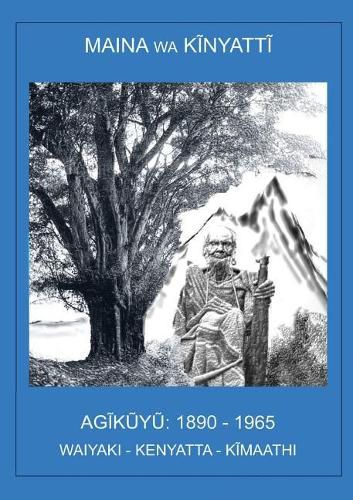Readings Newsletter
Become a Readings Member to make your shopping experience even easier.
Sign in or sign up for free!
You’re not far away from qualifying for FREE standard shipping within Australia
You’ve qualified for FREE standard shipping within Australia
The cart is loading…






This title is printed to order. This book may have been self-published. If so, we cannot guarantee the quality of the content. In the main most books will have gone through the editing process however some may not. We therefore suggest that you be aware of this before ordering this book. If in doubt check either the author or publisher’s details as we are unable to accept any returns unless they are faulty. Please contact us if you have any questions.
This book, written in Gikuyu this book is intended to serve as a textbook for students of history who are interested in studying the history and culture of the Agikuyu people and their involvement in the struggle for national independence. The material is chronologically arranged in four sections, covering the entire range of Kenyan history, from the colonial period to 1965.
The first section (1884-1920) covers the primary resistance to the establishment and consolidation of colonial rule. The second section covers 1920 - 1940 when the forces of independence operated within the framework of colonial democracy . In a practical sense, the period witnessed the peasant-worker alliance against colonial occupation, the formation of the first African political organizations, including the Young Kikuyu Association, East African Association, Kavirondo Young Association, Kikuyu Central Association, North Kavirondo Young Association, Ukamba Members Association, and Taita Hills Association. The period also witnessed the formation of the trade union movement and the intensification of the anti-imperialist cultural resistance. Section three 1940-1952 details anti-colonial efforts whose objective were to overthrow the colonial system through electoral politics and create a non-racial democratic society. From this formed a national anti-imperialist front, the Kenya African Union, in 1944 under the leadership of Jomo Kenyatta. At this stage, divergent class and individual interest began to manifest themselves within the African population. The fourth section, 1952-1963, was that of the armed independence movement, the formation of the Mau Mau movement with its armed wing, the Kenya Land and Freedom Army (KLFA), led by Field Marshal Kimathi, which sought to eradicate the colonial system altogether.
$9.00 standard shipping within Australia
FREE standard shipping within Australia for orders over $100.00
Express & International shipping calculated at checkout
This title is printed to order. This book may have been self-published. If so, we cannot guarantee the quality of the content. In the main most books will have gone through the editing process however some may not. We therefore suggest that you be aware of this before ordering this book. If in doubt check either the author or publisher’s details as we are unable to accept any returns unless they are faulty. Please contact us if you have any questions.
This book, written in Gikuyu this book is intended to serve as a textbook for students of history who are interested in studying the history and culture of the Agikuyu people and their involvement in the struggle for national independence. The material is chronologically arranged in four sections, covering the entire range of Kenyan history, from the colonial period to 1965.
The first section (1884-1920) covers the primary resistance to the establishment and consolidation of colonial rule. The second section covers 1920 - 1940 when the forces of independence operated within the framework of colonial democracy . In a practical sense, the period witnessed the peasant-worker alliance against colonial occupation, the formation of the first African political organizations, including the Young Kikuyu Association, East African Association, Kavirondo Young Association, Kikuyu Central Association, North Kavirondo Young Association, Ukamba Members Association, and Taita Hills Association. The period also witnessed the formation of the trade union movement and the intensification of the anti-imperialist cultural resistance. Section three 1940-1952 details anti-colonial efforts whose objective were to overthrow the colonial system through electoral politics and create a non-racial democratic society. From this formed a national anti-imperialist front, the Kenya African Union, in 1944 under the leadership of Jomo Kenyatta. At this stage, divergent class and individual interest began to manifest themselves within the African population. The fourth section, 1952-1963, was that of the armed independence movement, the formation of the Mau Mau movement with its armed wing, the Kenya Land and Freedom Army (KLFA), led by Field Marshal Kimathi, which sought to eradicate the colonial system altogether.